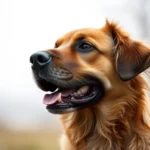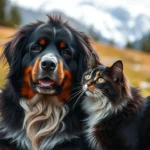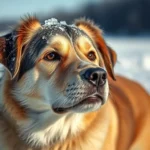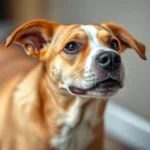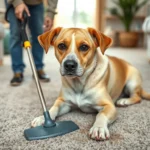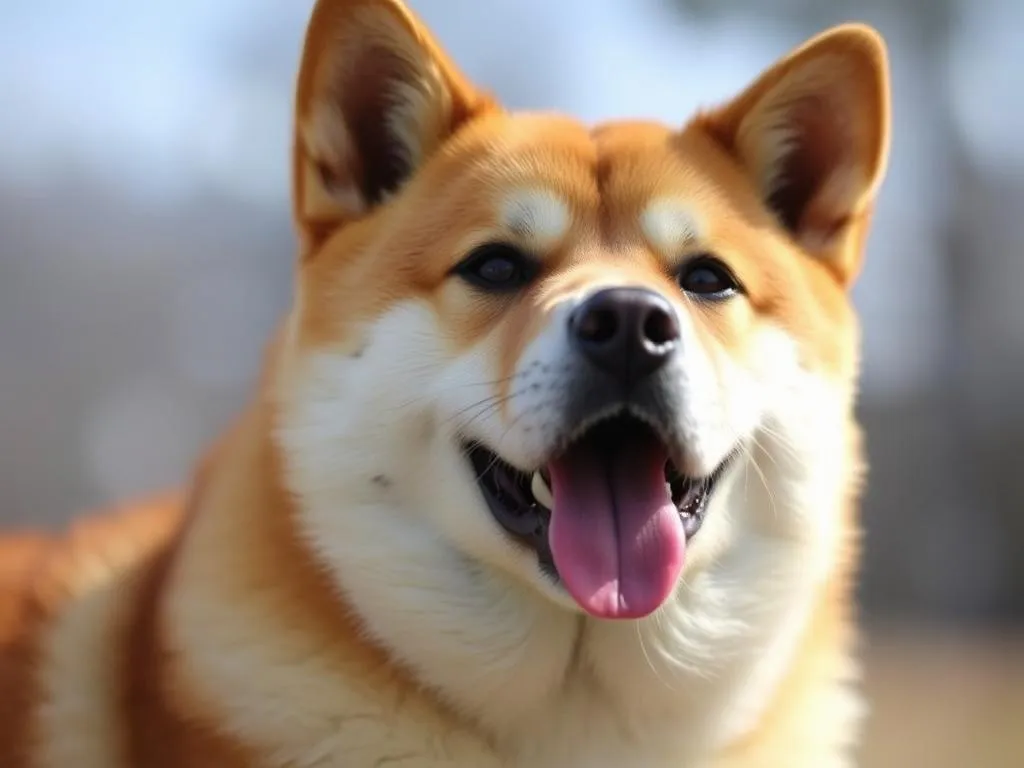
Introduction
The Shiba Inu is one of the most beloved dog breeds worldwide, known for its spirited personality and fox-like appearance. Originating from Japan, this ancient breed has captured the hearts of dog lovers and enthusiasts alike, becoming a popular choice for both families and singles. The Shiba Inu has made a significant impact on modern culture, often featured in memes and social media due to its adorable looks and quirky behavior.
Understanding essential Shiba Inu facts is crucial for potential owners and enthusiasts. Whether you’re considering adopting a Shiba Inu or simply want to learn more about this remarkable breed, knowing the specifics will help you appreciate their unique traits and needs. This article will delve into various aspects of the Shiba Inu, from its history and physical characteristics to its temperament, care requirements, and cultural significance.
History and Origin of Shiba Inu
Ancient Roots
The Shiba Inu is one of the oldest dog breeds in Japan, with origins that date back over 2,000 years. Bred primarily for hunting small game in the mountainous regions of Japan, the Shiba Inu was valued for its keen senses and agility. The name “Shiba Inu” translates to “small dog,” which aptly describes its compact size.
Historically, the Shiba Inu played a significant role in Japanese culture. It was not only a hunting companion but also a symbol of loyalty and courage. The breed has been recognized as a national treasure in Japan, showcasing its importance in the country’s heritage.
Breed Development
Over the centuries, the Shiba Inu has undergone various developments. In the early 20th century, the breed faced significant population decline due to the impact of World War II and a subsequent distemper outbreak. However, dedicated breeders worked tirelessly to revive the breed, focusing on preserving its characteristics and improving its health.
By the 1950s, the Shiba Inu had regained its popularity, eventually making its way to the United States. Today, it is recognized by the American Kennel Club (AKC) and continues to thrive as a cherished companion.
Physical Characteristics
Size and Weight
The Shiba Inu is a small to medium breed, with males typically weighing between 23-27 pounds and females ranging from 17-22 pounds. Standing about 14.5 to 16.5 inches tall at the shoulder, Shiba Inus are compact and well-proportioned, making them suitable for various living situations, including apartments.
When compared to other dog breeds, the Shiba Inu’s size makes it an excellent choice for those who want a dog with a manageable stature while still having a bold personality.
Coat and Color
The Shiba Inu is known for its beautiful double coat, which consists of a soft, dense undercoat and a stiff, straight outer coat. This unique coat structure not only enhances its appearance but also provides insulation against varying weather conditions.
Common Shiba Inu colors include:
– Red
– Sesame (red with black-tipped hairs)
– Black and Tan
– Cream
Their coat requires regular grooming, especially during shedding seasons, to maintain its luster and minimize loose hair around the house.
Distinctive Features
One of the most striking characteristics of the Shiba Inu is its unique facial structure. They possess a fox-like face with a well-defined stop and small, triangular ears that stand erect. Their eyes are almond-shaped and convey a spirited expression, adding to their charm.
Additionally, Shiba Inus have a curled tail that rests over their back, contributing to their distinctive profile. Their overall body posture is alert and confident, reflecting their spirited nature.
Temperament and Behavior
General Temperament
The Shiba Inu is known for its independent and confident personality. Often described as spirited, these dogs are intelligent, curious, and can sometimes be aloof with strangers. However, they are fiercely loyal to their families and can be affectionate with those they trust.
Understanding their temperament is essential for potential owners, as it affects their suitability as pets. Shiba Inus thrive in environments where they receive consistent training and socialization, which helps mitigate their independent streak.
Socialization Needs
Early socialization is crucial for Shiba Inus. Exposing them to various people, environments, and experiences during their formative months will help them develop into well-rounded adults. It’s important to ensure that these interactions are positive, as Shiba Inus can be wary of unfamiliar situations.
To socialize a Shiba Inu, consider the following tips:
– Introduce them to different environments gradually.
– Encourage positive interactions with other dogs and people.
– Use treats and praise to reinforce good behavior during socialization.
Training Challenges
Training a Shiba Inu can present challenges due to their independent and sometimes stubborn nature. They are intelligent dogs but may choose not to obey commands if they don’t see the benefit.
Common training issues include:
– Independence: Shiba Inus may prefer to do things their way.
– Stubbornness: They can resist commands, especially if they don’t find them engaging.
To effectively train a Shiba Inu, consider using positive reinforcement techniques:
– Utilize treats and praise to reward good behavior.
– Keep training sessions short and engaging to maintain their interest.
– Be patient and consistent, as Shiba Inus can take time to learn.
Health and Lifespan
Common Health Issues
Like all breeds, the Shiba Inu is prone to certain hereditary health conditions. Common health issues include:
– Hip Dysplasia: A genetic condition where the hip joint doesn’t fit snugly into the hip socket, leading to arthritis.
– Patellar Luxation: A condition where the kneecap dislocates, causing discomfort and mobility issues.
– Allergies: Shiba Inus can suffer from skin allergies and sensitivities.
Regular veterinary check-ups are essential to monitor their health and catch any potential issues early. Responsible breeders will also conduct health screenings to ensure they are breeding healthy dogs.
Lifespan Expectations
The average lifespan of a Shiba Inu is around 12 to 15 years. Factors influencing their longevity include genetics, diet, exercise, and overall health care. By providing a balanced diet, regular exercise, and routine veterinary care, owners can help their Shiba Inus live long, healthy lives.
Care and Maintenance
Grooming Requirements
Maintaining a Shiba Inu’s coat requires regular grooming, particularly during shedding seasons, which occur twice a year. Brushing them at least once a week will help control shedding and keep their coat healthy. During heavy shedding periods, daily brushing may be necessary.
Bathing should be done as needed, typically every few months, or when they become particularly dirty. Ensure to use dog-specific shampoos to avoid skin irritation.
Diet and Nutrition
A well-balanced diet is crucial for a healthy Shiba Inu. High-quality dog food, whether commercial or homemade, should be rich in protein and essential nutrients. Portion control is vital, as Shiba Inus can be prone to obesity if overfed.
Consulting with a veterinarian about the best diet for your Shiba Inu is recommended, as they can provide tailored advice based on your dog’s age, weight, and health status.
Exercise Needs
Shiba Inus are energetic dogs that require daily exercise to stay healthy and happy. They thrive with a combination of physical and mental stimulation. Recommended activities include:
– Daily walks
– Playtime in the backyard
– Interactive games and puzzle toys
Providing a variety of activities will help prevent boredom and reduce the likelihood of destructive behaviors.
Shiba Inu in Popular Culture
Social Media Presence
The Shiba Inu has gained immense popularity on social media platforms like Instagram and TikTok. Their expressive faces and playful antics have led to countless viral videos and memes. Accounts dedicated to Shiba Inus often showcase their unique personality traits, making them a favorite among dog lovers online.
Representation in Media
Beyond social media, the Shiba Inu has made numerous appearances in movies, TV shows, and books. One of the most notable representations is the famous “Doge” meme, which features a Shiba Inu with humorous captions in Comic Sans font, capturing the breed’s quirky spirit. Their cultural significance extends into various forms of media, often symbolizing loyalty, courage, and tenacity.
Pros and Cons of Owning a Shiba Inu
Advantages
Owning a Shiba Inu comes with several advantages:
– Loyalty and Companionship: Shiba Inus are known for their strong bond with family members, providing loyal companionship.
– Low Grooming Needs: While they do shed, the Shiba Inu’s grooming requirements are relatively low compared to other breeds, making them easier to maintain.
Disadvantages
However, potential owners should also consider the disadvantages of owning a Shiba Inu:
– Independent and Stubborn Nature: Their independent streak can lead to challenges in training and obedience.
– Challenges in Training and Behavior: Without proper training and socialization, Shiba Inus can develop behavioral issues, making them less suitable for novice dog owners.
Conclusion
In summary, the Shiba Inu is a unique and captivating breed with a rich history, striking appearance, and spirited personality. Understanding essential Shiba Inu facts—from their origins and physical characteristics to their health care needs and cultural significance—can help potential owners appreciate what makes this breed so special.
While owning a Shiba Inu comes with its challenges, the loyalty, companionship, and joy they bring can make the effort worthwhile. Responsible ownership and a commitment to understanding their needs are key to a fulfilling relationship with these remarkable dogs.




